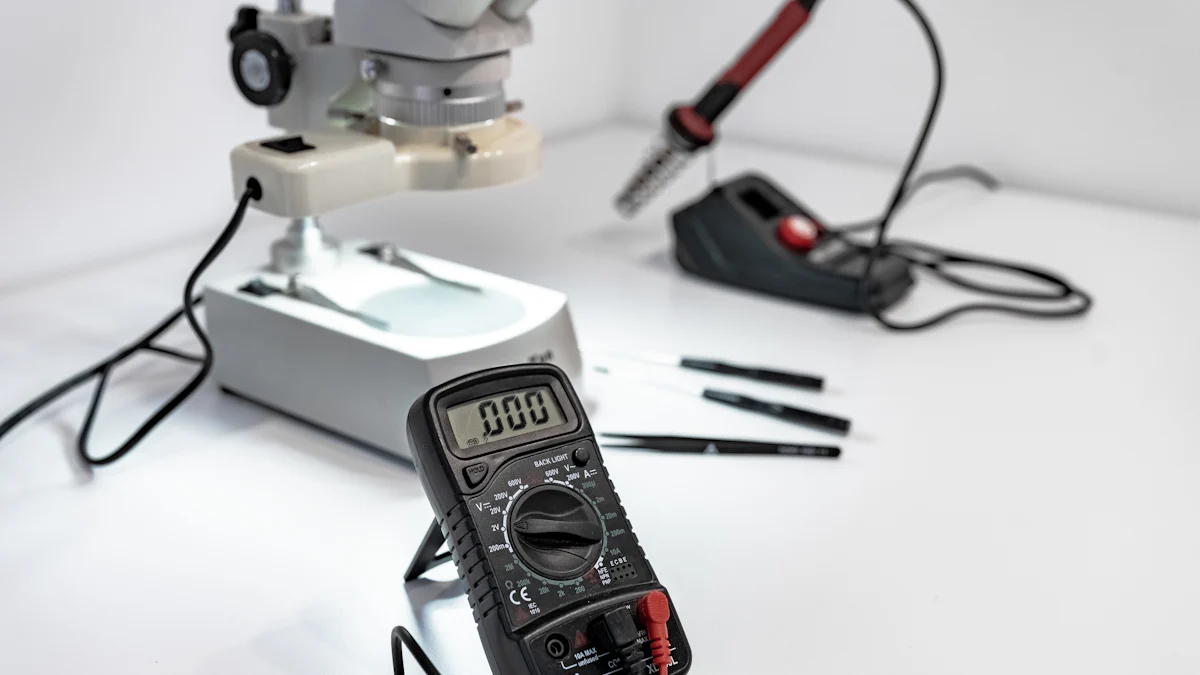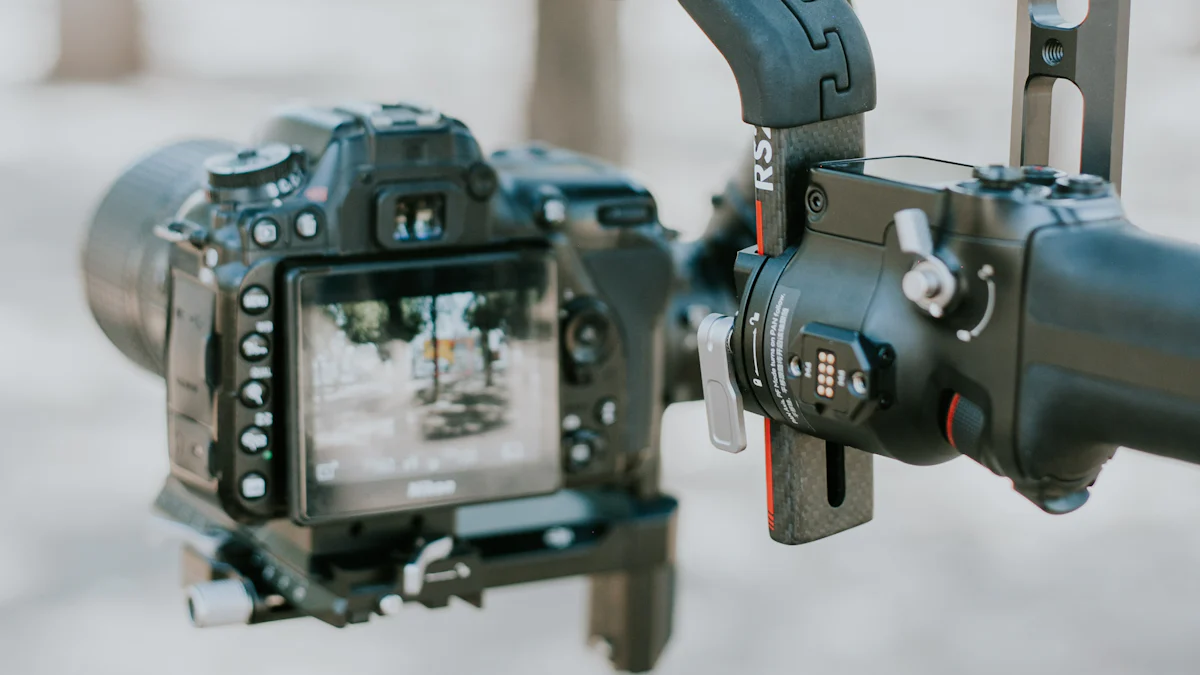
Resolution in thermal sensors defines the level of detail captured in thermal imaging. It determines how many pixels make up the image, directly influencing its clarity and sharpness. A higher resolution means more pixels, resulting in sharper images with greater detail. This clarity becomes essential when you need precise analysis or accurate detection, such as identifying temperature variations or small objects. Choosing the right resolution ensures that your thermal imaging device meets the demands of your specific application, whether for industrial inspections, medical diagnostics, or surveillance.
Key Takeaways
Higher resolution in thermal sensors leads to sharper images, allowing for precise detection of small objects and subtle temperature variations.
Choosing the right resolution is crucial for specific applications, such as industrial inspections, medical diagnostics, and surveillance, to ensure optimal performance.
Understanding key metrics like pixel pitch and thermal sensitivity helps in evaluating thermal sensors effectively and making informed purchasing decisions.
High-resolution thermal cameras can cover larger areas in a single scan, reducing the need for multiple images and saving time during inspections.
Investing in high-resolution thermal imaging devices enhances your ability to make informed decisions based on clear and detailed thermal data.
Balancing resolution with other factors, such as field of view and thermal sensitivity, is essential for achieving the best results in thermal imaging.
Incorporating high-resolution thermal imaging into medical and industrial applications can significantly improve diagnostics and maintenance processes.
What is Resolution in Thermal Sensors?
Definition and Role of Sensor Resolution
Resolution in thermal sensors refers to the number of pixels that make up a thermal image. Each pixel represents a specific temperature value, and together, they form the complete thermal image. Higher sensor resolution means more pixels, which translates to sharper and more detailed images. For example, a thermal camera like the Xiris XIR-1800 with a resolution of 640×512 captures precise thermal details, making it ideal for applications requiring accurate temperature analysis.
The role of sensor resolution extends beyond just image clarity. It directly impacts your ability to detect small objects or subtle temperature differences. High-resolution sensors allow you to measure temperatures from greater distances without losing accuracy. This capability proves essential in scenarios like industrial inspections, where detecting minor “hot spots” can prevent equipment failures. Additionally, higher resolution enables you to capture larger areas in a single shot, reducing the need for multiple images to cover the same space.
How Resolution Differs from Other Factors in Thermal Imaging
While resolution plays a critical role in thermal imaging, it is not the only factor influencing image quality. Other parameters, such as thermal sensitivity and the field of view, also contribute to the overall performance of a thermal camera. Thermal sensitivity determines how well the sensor detects small temperature differences, while the field of view defines the area the camera can capture in a single frame.
Unlike standard visible light sensors, where increasing resolution enhances image detail, thermal imaging operates differently. Elevating resolution in thermal cameras while maintaining the same pixel pitch provides a rather than additional detail. This unique characteristic makes it crucial to balance resolution with other specifications based on your specific needs. For instance, a high-resolution thermal camera may offer superior clarity, but its effectiveness also depends on its thermal sensitivity and field of view.
Understanding these distinctions helps you make informed decisions when selecting a thermal imaging device. By prioritizing sensor resolution alongside other factors, you can ensure optimal performance for your intended application.
How Resolution Affects Clarity

The Relationship Between Sensor Resolution and Image Detail
The resolution in thermal sensors plays a pivotal role in determining the level of detail visible in thermal imaging. Higher sensor resolution means more pixels are used to create the image, resulting in sharper and more defined visuals. This increased clarity allows you to detect smaller objects and subtle temperature variations with greater precision. For instance, when inspecting industrial equipment, a high-resolution sensor can reveal minor “hot spots” that may indicate potential failures.
In contrast, lower-resolution sensors capture fewer details, which can make it harder to identify critical temperature differences or small objects. This limitation becomes especially noticeable in applications requiring detailed analysis, such as medical diagnostics or wildlife observation. A high-resolution thermal imaging device ensures that you can interpret temperature data accurately, even in complex environments.
The relationship between resolution and image detail also extends to the field of view. A higher resolution sensor can cover larger areas without compromising image quality. This capability reduces the need for multiple scans, saving time and effort during inspections or surveillance tasks. By choosing the right resolution, you can ensure that your thermal imaging device meets the demands of your specific application.
Examples of High-Resolution vs. Low-Resolution Thermal Imaging
The difference between high-resolution and low-resolution thermal imaging becomes evident when comparing their performance in real-world scenarios. High-resolution thermal cameras, such as those with 640×512 pixels or more, deliver sharper images with greater detail. These devices excel in applications like search and rescue, where identifying small heat signatures can mean the difference between success and failure. They also prove invaluable in industrial settings, enabling you to detect minor temperature anomalies that could indicate equipment malfunctions.
On the other hand, low-resolution thermal cameras, often with resolutions around 256×192 pixels, provide less clarity. While they may suffice for basic tasks like detecting large heat sources, they struggle with capturing fine details. For example, in security applications, a low-resolution camera might fail to distinguish between a person and an animal at a distance. This lack of detail can hinder accurate decision-making in critical situations.
To illustrate, imagine using a high-resolution thermal camera to monitor a large industrial facility. The camera’s ability to capture fine details allows you to identify specific components that require maintenance. In contrast, a low-resolution camera might only show a general area of concern, leaving you to guess the exact source of the problem. By investing in a high-resolution device, you gain the ability to make informed decisions based on clear and detailed thermal images.
Measuring Resolution in Thermal Sensors
Key Metrics for Measuring Sensor Resolution
Understanding the key metrics for measuring sensor resolution helps you evaluate the performance of thermal sensors effectively. The resolution in thermal sensors is defined by the number of pixels that make up the thermal image. Each pixel corresponds to a specific temperature value, and the total pixel count determines the level of detail captured. For instance, a sensor with a resolution of 640×480 pixels contains 307,200 pixels, enabling it to produce highly detailed thermal images.
Another critical metric is the pixel pitch, which refers to the distance between the centers of two adjacent pixels. Smaller pixel pitch values result in higher spatial resolution, allowing the sensor to distinguish finer details. For example, a thermal sensor with a 12µm pixel pitch provides better clarity than one with a 17µm pitch, especially when detecting small objects or subtle temperature variations.
Thermal sensitivity, often measured in milliKelvins (mK), is another essential specification. It indicates the smallest temperature difference the sensor can detect. A lower sensitivity value, such as 30mK, ensures the sensor can identify even minor temperature changes, enhancing the clarity of the thermal image. This metric, also known as Noise Equivalent Temperature Difference (NETD), plays a significant role in applications requiring precise temperature analysis.
When evaluating sensor resolution, you should also consider the field of view. A wider field of view allows the sensor to capture larger areas in a single frame, reducing the need for multiple scans. However, achieving a balance between resolution and field of view is crucial. High-resolution sensors with a narrow field of view may provide excellent detail but limit the coverage area. By understanding these metrics, you can select a thermal imaging device that meets your specific needs.
Standards and Specifications in Thermal Imaging
Thermal imaging devices adhere to established standards and specifications to ensure consistent performance across various applications. These standards categorize sensor resolution into three primary levels: low, medium, and high. Low-resolution sensors, typically below 160×120 pixels, are suitable for basic tasks like detecting large heat sources. Medium-resolution sensors, such as those with 320×240 pixels, offer improved clarity and are ideal for general-purpose applications. High-resolution sensors, exceeding 640×480 pixels, deliver exceptional detail and are preferred for advanced tasks like medical diagnostics or industrial inspections.
Manufacturers also follow industry guidelines for thermal sensitivity. The standard NETD value for most thermal sensors is around 30mK at 30°C. Sensors meeting this benchmark can reliably detect small temperature differences, ensuring accurate thermal imaging. Devices with lower NETD values provide even greater sensitivity, making them suitable for specialized applications.
Pixel pitch standards further influence sensor performance. Most thermal sensors feature a pixel pitch between 12µm and 17µm. Smaller pixel pitches enhance spatial resolution, enabling the sensor to capture finer details. However, achieving a smaller pixel pitch often increases production costs, which may affect the affordability of high-resolution devices.
Adhering to these standards ensures that thermal imaging devices deliver consistent and reliable results. When selecting a thermal sensor, you should prioritize specifications that align with your application requirements. By doing so, you can maximize the performance and value of your thermal imaging equipment.
Practical Implications of Resolution in Thermal Sensors

Applications in Medical Imaging
High-resolution thermal imaging cameras have revolutionized medical diagnostics. These devices allow you to detect subtle temperature variations on the human body, which can indicate underlying health conditions. For example, high-resolution thermal sensors can identify inflammation, poor blood circulation, or even early signs of infection. The ability to capture detailed thermal images ensures accurate diagnostics, helping healthcare professionals make informed decisions.
Thermal imaging attachments enhance the versatility of medical equipment. By integrating these attachments with existing diagnostic tools, you can expand their functionality without investing in entirely new systems. This approach proves cost-effective while maintaining the precision required for medical applications. Additionally, the wide field of view offered by advanced thermal imaging riflescopes ensures comprehensive coverage of the area being examined, reducing the need for repeated scans.
Thermal imaging also plays a critical role in veterinary medicine. High-resolution thermal imaging attachments help veterinarians detect injuries, infections, or other abnormalities in animals. This non-invasive method minimizes stress for the animal while providing valuable insights for treatment. By leveraging the resolution in thermal sensors, you can ensure that both human and animal patients receive the best possible care.
Applications in Surveillance
In surveillance, high-resolution thermal imaging riflescopes provide unparalleled clarity, even in complete darkness. These devices enable you to monitor large areas effectively, ensuring that no detail goes unnoticed. Whether you’re securing a perimeter or conducting search-and-rescue operations, the sharpness of high-resolution thermal images enhances your ability to detect and identify objects or individuals.
Thermal imaging attachments further improve the adaptability of surveillance systems. You can easily integrate these attachments with existing cameras or scopes, enhancing their performance without replacing the entire setup. This flexibility proves invaluable in dynamic environments where quick adjustments are necessary. The superior resolution in thermal sensors ensures that you can distinguish between objects, such as identifying a person versus an animal, even at a distance.
The wide field of view provided by advanced thermal imaging cameras allows you to cover extensive areas in a single scan. This capability reduces the time and effort required for monitoring, making your surveillance operations more efficient. By choosing high-resolution thermal imaging equipment, you can ensure that your security measures remain robust and reliable.
Applications in Industrial Use
In industrial settings, high-resolution thermal imaging cameras serve as essential tools for maintenance and inspections. These devices enable you to detect anomalies, such as microcracks, minor leaks, or overheating components, that could lead to equipment failure. By identifying these issues early, you can prevent costly downtime and ensure the safety of your operations.
Thermal imaging riflescopes and attachments enhance the precision of industrial inspections. You can use these tools to focus on specific areas or integrate them with existing systems for a more comprehensive analysis. The resolution in thermal sensors plays a crucial role in capturing detailed images, allowing you to pinpoint the exact location of a problem.
The wide field of view offered by advanced thermal imaging equipment ensures that you can inspect large areas quickly and efficiently. This feature proves particularly useful in industries like energy, construction, and manufacturing, where time is a critical factor. By investing in high-resolution thermal imaging devices, you can optimize your maintenance processes and improve overall operational efficiency.
Welcome to AirSeeker, an ODM solution provider with 12 years of experience specializing in thermal imaging technology. We are dedicated to offering top-notch customized solutions for outdoor hunting enthusiasts, outdoor observers, shooting enthusiasts, farm monitoring, and law enforcement agencies. Product ranges from thermal scope for rifles, thermal clip on, thermal monocular, binoculars, including night vision clip on; All products are not only truly waterproof and impact-resistant but also feature sniper-level ballistic calculation technology, ensuring clear and reliable visibility in any environment.
Business Cooperation : info@airseekertec.com
Resolution in thermal sensors plays a pivotal role in determining the clarity and quality of thermal images. Higher resolution ensures sharper visuals, enabling you to detect subtle temperature variations and small objects with precision. This capability becomes essential for applications like medical diagnostics, industrial inspections, and surveillance. Selecting the right resolution tailored to your specific needs enhances both efficiency and accuracy. When choosing thermal imaging equipment, always consider resolution as a key factor alongside metrics like noise equivalent temperature difference and field of view. This approach ensures optimal performance and value for your investment.
FAQ
How does thermal sensor resolution impact clarity in thermal images?
Thermal sensor resolution directly affects the clarity of thermal images. Higher resolution cameras capture more pixels, resulting in sharper and more detailed visuals. This allows you to analyze temperature variations with greater precision and interpret thermal data more effectively.
What does increasing thermal resolution result in?
Increasing the resolution of a thermal camera enhances the clarity of its images. With more pixels, the camera can display finer details, making it easier for you to detect subtle temperature differences or small objects in the scene.
Why is the resolution of the thermal sensor important?
The resolution of a thermal sensor, particularly the microbolometer, determines the number of sensitive elements (pixels) that form the image. A higher pixel count produces more detailed and accurate thermal images, which is crucial for applications requiring precise analysis.
What is the significance of resolution in thermal imaging cameras?
Resolution defines the total number of pixels in a thermal image. Cameras with higher resolution deliver sharper and more defined visuals, enabling you to identify objects and temperature variations with greater accuracy.
How is resolution related to the clarity of a subject in thermal imaging cameras?
Resolution and clarity go hand in hand. A higher resolution camera contains more pixels, which results in better image quality. This ensures that you can clearly distinguish subjects and detect even the smallest details in thermal imaging.
What does thermal sensitivity mean in thermal imaging cameras?
Thermal sensitivity refers to the smallest temperature difference a camera can detect. This specification impacts the sharpness and clarity of the thermal images. A camera with high thermal sensitivity can reveal even minor temperature changes, providing you with more precise data.
Can a low-resolution thermal camera meet all application needs?
Low-resolution thermal cameras may suffice for basic tasks, such as detecting large heat sources. However, they often lack the detail required for applications like medical diagnostics or industrial inspections. For tasks demanding precision, you should opt for a high-resolution device.
How do I choose the right resolution for my thermal imaging needs?
To select the right resolution, consider your specific application. For detailed analysis, such as identifying small temperature variations or inspecting intricate components, a high-resolution camera is essential. For general-purpose tasks, a medium-resolution camera may be sufficient.
Does a higher resolution always mean better performance?
While higher resolution improves image clarity, it is not the sole factor determining performance. You should also evaluate other specifications, such as thermal sensitivity and field of view, to ensure the camera meets your requirements.
What are the benefits of using high-resolution thermal imaging cameras?
High-resolution thermal cameras offer numerous advantages. They provide sharper images, enable you to detect subtle temperature differences, and allow for more accurate analysis. These benefits make them ideal for critical applications like surveillance, medical diagnostics, and industrial inspections.